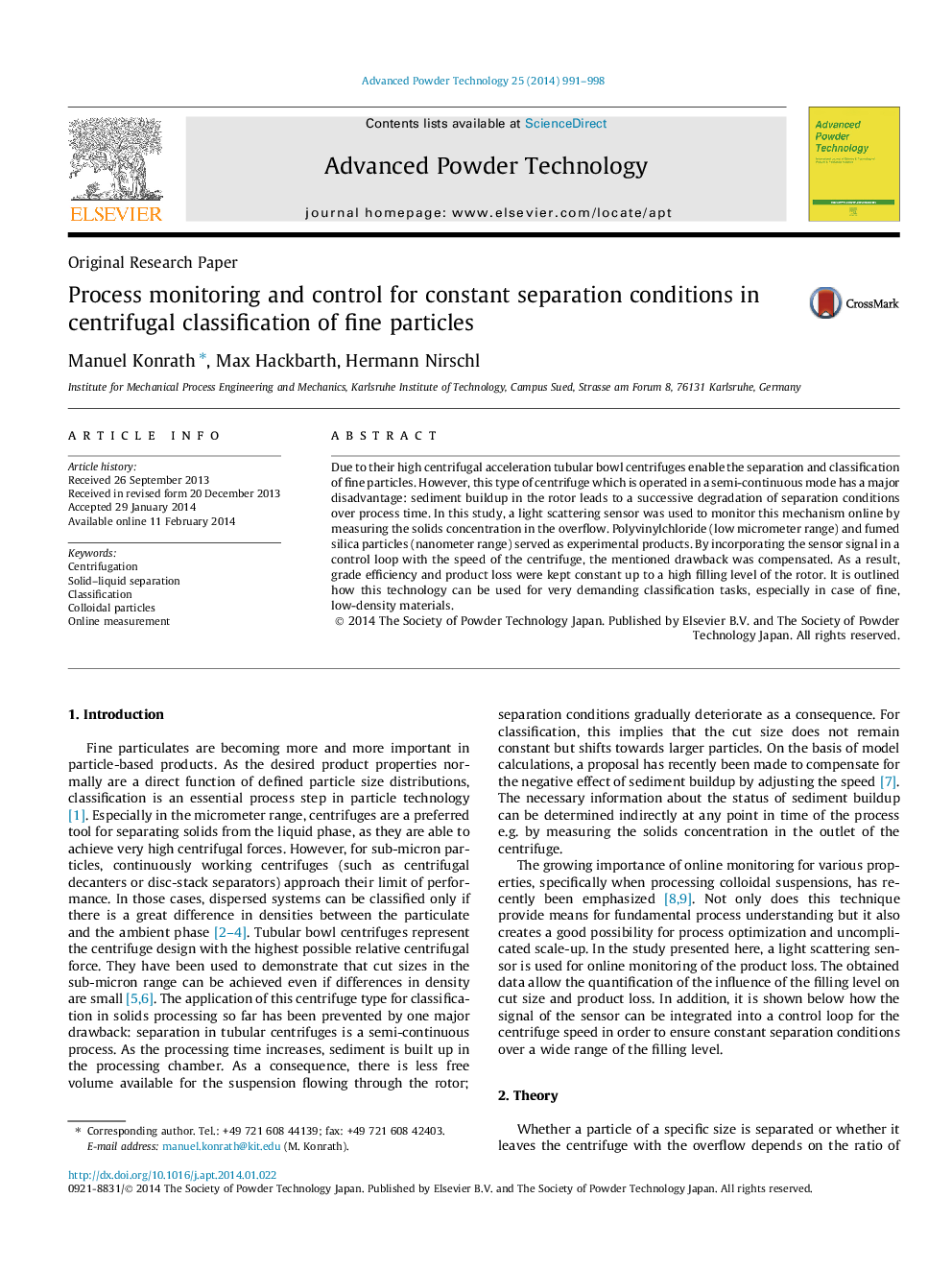| کد مقاله | کد نشریه | سال انتشار | مقاله انگلیسی | نسخه تمام متن |
|---|---|---|---|---|
| 144856 | 438952 | 2014 | 8 صفحه PDF | دانلود رایگان |
• Overflow solids concentration of a semi-continuous centrifuge was measured online.
• Suitable method to quantify negative influence of sediment buildup on separation.
• The sensor signal was incorporated in a control loop with the centrifuge speed.
• The control was successfully used to keep the separation conditions constant.
• The technique enables highly demanding classification tasks of colloidal particles.
Due to their high centrifugal acceleration tubular bowl centrifuges enable the separation and classification of fine particles. However, this type of centrifuge which is operated in a semi-continuous mode has a major disadvantage: sediment buildup in the rotor leads to a successive degradation of separation conditions over process time. In this study, a light scattering sensor was used to monitor this mechanism online by measuring the solids concentration in the overflow. Polyvinylchloride (low micrometer range) and fumed silica particles (nanometer range) served as experimental products. By incorporating the sensor signal in a control loop with the speed of the centrifuge, the mentioned drawback was compensated. As a result, grade efficiency and product loss were kept constant up to a high filling level of the rotor. It is outlined how this technology can be used for very demanding classification tasks, especially in case of fine, low-density materials.
Figure optionsDownload as PowerPoint slide
Journal: Advanced Powder Technology - Volume 25, Issue 3, May 2014, Pages 991–998
